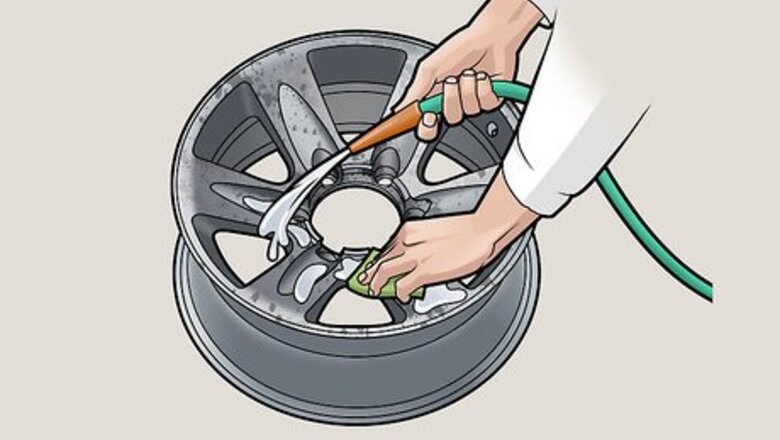
views
Cleaning the Wheels
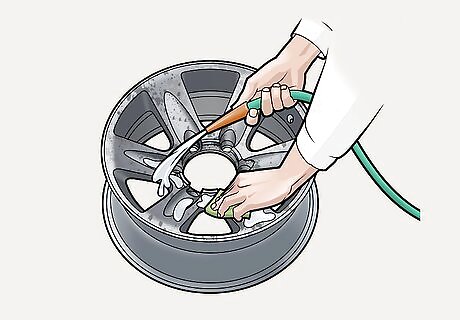
Rinse down the wheels and the surrounding areas. Use a hose to spray inside the wheel spokes, on the surface of the wheel, and around the lug nuts. This will loosen up the grime and brake dust that has collected on the wheel, prepping the wheels for treatment. If you have a pressure washer, use this to provide a stronger stream of water.
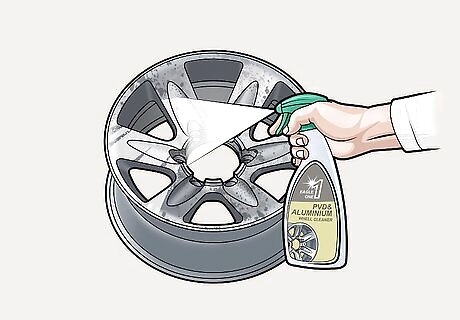
Spray aluminum wheel cleaner over the surface of the wheels. Some examples of aluminum wheel cleaner are P21S Gel Wheel Cleaner and SONAX Wheel Cleaner, but any non-acidic, aluminum wheel cleaner will do. Spray the cleaner over the surface of the wheels, inside of the spokes, and around the lug nuts. You can find aluminum wheel cleaners at a mechanic shop, a superstore (for example, Walmart) or online on Amazon. If you want to make your own aluminum wheel cleaner at home, you can try combining lemon juice and soda and using this as a cleaner. You can also wash the wheel with dawn detergent and water, and then sprinkle on baking soda to scrub. In both of these cases there is an abrasive material (soda or baking soda) which serves to scrub off grime.
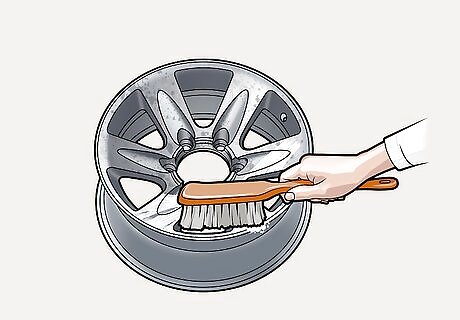
Agitate the cleaner with a soft-bristled brush, periodically applying water. Scrub the surface of the wheel, inside the spokes and around the lug nuts. You may need special, wheel-specific brushes or a toothbrush to get into hard to reach areas. If the wheel starts to dry, add more water to it as you scrub. Scrubbing a dry wheel might scratch the finish. To reach in and scrub inside the spokes, use a cone brush. To get around the lug nuts, use a lug nut brush. Both kinds of brushes should be available at mechanic shops. A soft-bristled brush will prevent you from scratching the finish on the wheel.
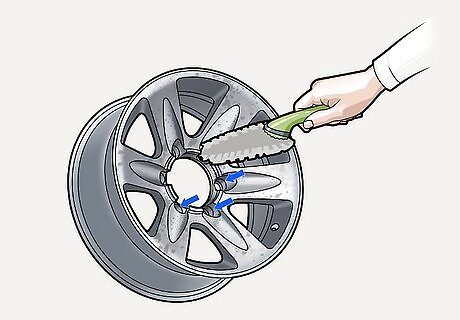
Scrub down the wheel wells with all-purpose cleaner and a stiff brush. The wheel wells are a prime spot for caked in dirt and grime. Use a stiffer brush in this area, as a soft bristled brush probably won’t do the trick. A long-handled brush can be helpful for reaching into the well. A soft-bristled brush is a bad fit for the wheel wells. You need soft bristles on the wheel surfaces and stiff bristles on the wheel wells.
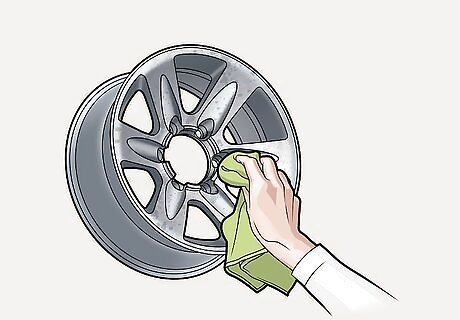
Rinse and dry the wheel with a clean cloth to remove leftover dust. Now that you’ve scrubbed away dirt and dust, use the hose to rinse the entirety of the wheel, directing water into the spokes, up to the wheel well, and in the lug nut holes. Let the wheel sit for a few minutes to dry, and use a clean rag to lightly remove residual dust.
Polishing the Aluminum
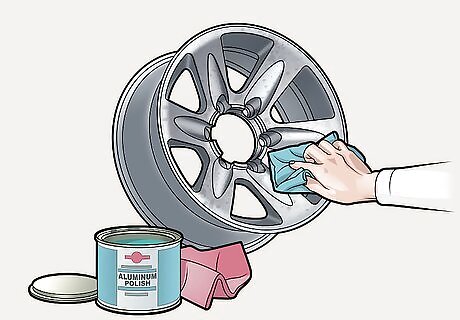
Rub aluminum polish onto a small section of the wheel with a rag. Aluminum polish is an effective way to remove oxidation from aluminum wheels, which aren’t well protected from this kind of damage. Use a clean rag to rub aluminum polish onto the wheel, working in the direction of the grain. Work in small sections so that the polish doesn’t dry before you work it in. Avoid rubbing in circles as it will lead to a streaky finish. An example aluminum polish is Wolfgang Metallwerk Fine Aluminum Polish, but any polish designed for bare aluminum should do the trick. You can find these kinds of polishes online, at a superstore, or at a mechanics shop.
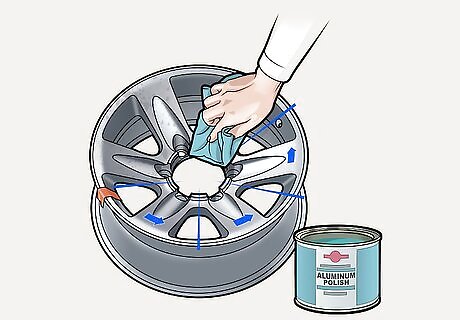
Work your way around the wheel with the aluminum polish section by section. Remember, you want to rub polish over small sections at a time to avoid the polish drying before you rub it in. Move deliberately around the wheel, section by section, and keep track of what you have already polished so you don’t end up with an uneven finish. Rub along the grain of the wheel as you go. Polish the lug nuts once you have finished the surface of the wheel.
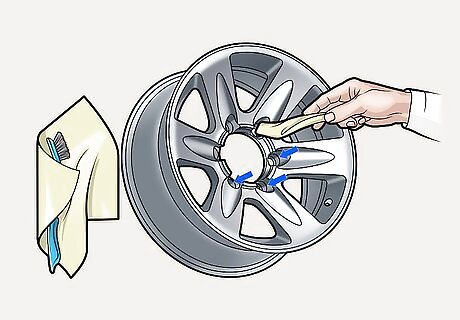
Use a cloth-wrapped toothbrush to polish hard-to-reach spots. Place a soft cloth around the toothbrush so the bristles don't mar the finish. Use the toothbrush to reach into the spoke areas and rub on polish where you could not reach on your initial sweep. This will also be useful for polishing around the lug nuts.
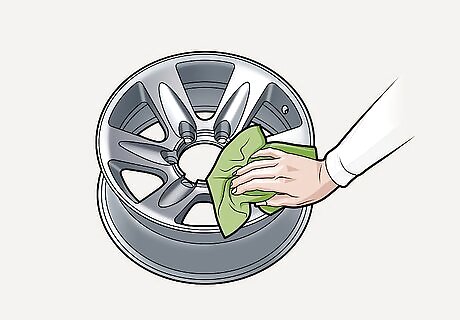
Wipe the wheel clean with a soft clean towel. Rub with the grain to dry off the wheel and remove the polish, working around the wheel deliberately like before. Always use new towels at each step in the process so you’re not rubbing polish or dirt back in when wiping the wheels clean.
Sealing the Wheels with Wax
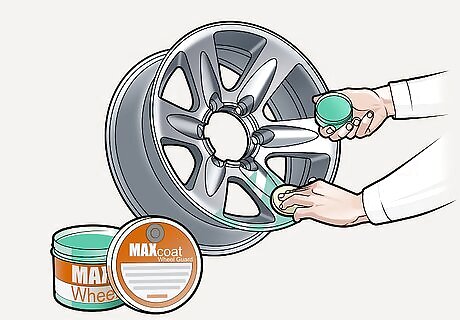
Place a small amount of wax on a clean cloth. Wheel wax helps protect your wheels and make them look cleaner much longer. You can measure a good amount of wax by putting it on your fingertip and then transferring it to the clean cloth. You can also protect the aluminum with a metal sealant, which works like wax to protect against oxidation. A wax or sealant will prevent your aluminum wheels from breaking down and help repel dirt.
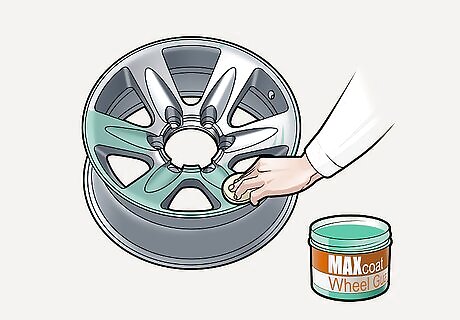
Rub the wax over the entire surface of the wheel. Rub with the grain of the aluminum, as you did with the aluminum polish. Cover the entire surface of the wheel with wax, reapplying wax to your cloth as necessary.
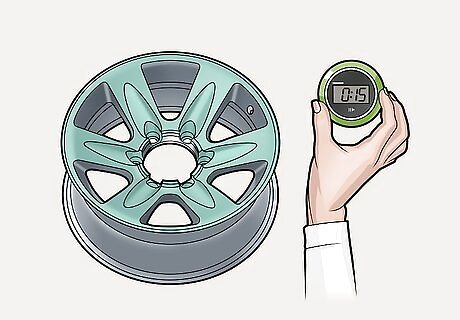
Allow the wax to dry fully, usually for about 10-15 minutes. Set a timer so you don’t forget to come back. The wax will seal onto the wheels to provide a protective layer while you wait.
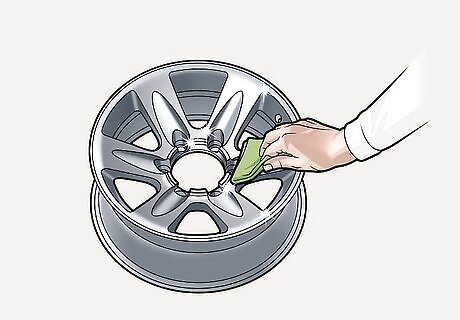
Wipe the wax off with a clean, dry cloth after 10-15 minutes. Touch the wax with your finger, and it should feel dry, making it easy to rub off with the rag. Your wheels should look super shiny, and the wax will help keep that polish in for the next week or two. You can repeat this process weekly to avoid having to polish your wheels as often. Simply rinse wheels with water, wipe them dry with a clean rag, and then apply the wax.

















Comments
0 comment